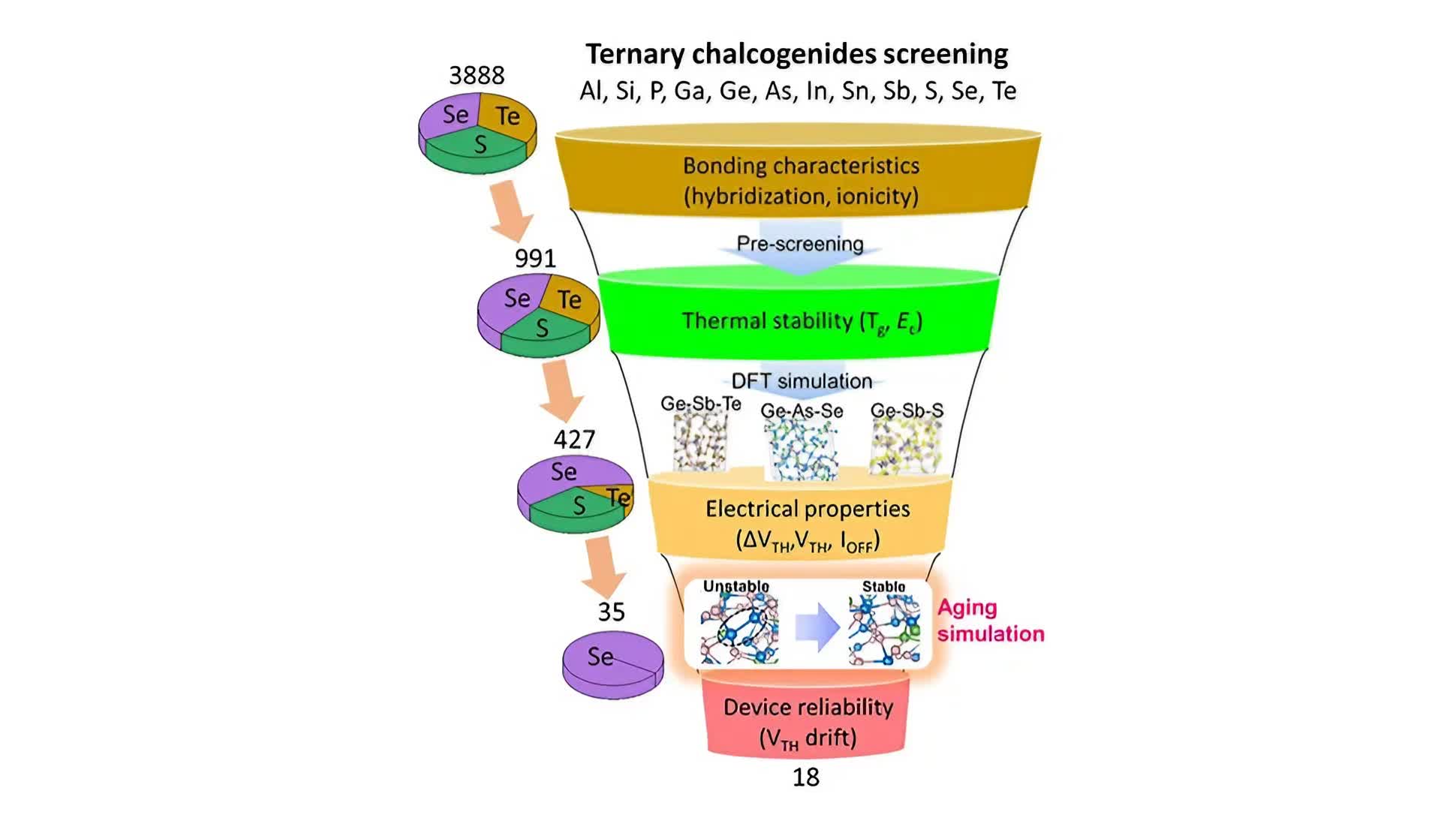Forward-looking: Samsung is working to accelerate the development of a promising new memory technology called Selector-Only Memory. The latest tech combines the non-volatility of flash storage and DRAM's lightning-fast read/write speeds, making it a potential game-changer. Furthermore, manufacturers can stack the chips for higher densities.
The core concept behind SOM is using unique chalcogenide materials that perform double duty as both the memory cell and the selector device. In traditional phase-change or resistive RAM, you need a separate component, like a transistor, to act as the selector to activate each cell. Conversely, the chalcogenide material in SOM switches between conductive and resistive states to store data.
Of course, not just any chalcogenide composition will do the trick. The materials must have optimal properties for memory performance and selector functionality. To find the right candidate, Samsung used advanced computer modeling to predict the potential of various material combinations. The company estimates that over 4,000 potential chalcogenide mixtures could work for SOM. Unfortunately, sorting through all those possibilities with physical experiments would be a nightmare in terms of cost and time.
However, eeNews Analog notes that Samsung's researchers took a shortcut, using complex simulations to screen thousands of chalcogenide combos. The research team modeled everything from the bonding properties to thermal stability to electrical behavior, whittling the list down to 18 prime candidates for fabrication and testing.
The simulations looked at key metrics like threshold voltage drift and the "memory window" separating the on and off states over time. Samsung claims its modeling techniques establish clear screening criteria to identify the most promising SOM material blends.
The team plans to present its findings at the International Electron Devices Meeting in December. In the meantime, Samsung claims the models allowed it to potentially spot high-performance outlier materials it might have missed with traditional experimental methods alone.
This computational acceleration could give Samsung a significant advantage as the race to bring SOM to market kicks into high gear. Last year at IEDM, the company presented results on a 64Gb SOM chip with a seriously dense 16nm cell size, proving it is a true contender.
Image credit: Raigvi

